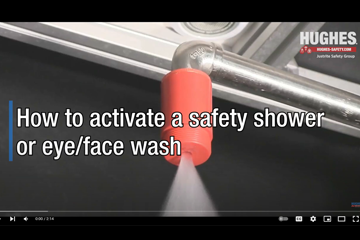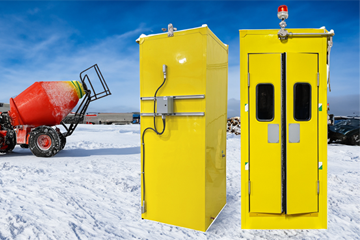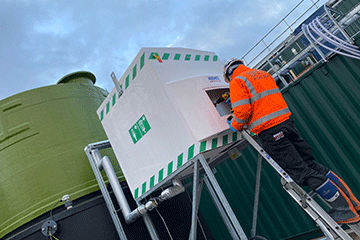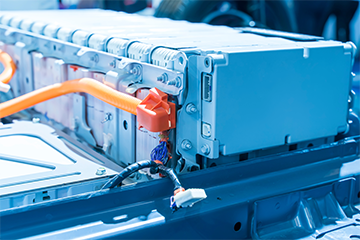Enquiry List () (0)
- Mar 10, 2022
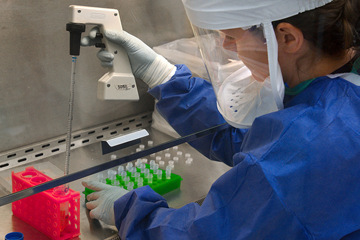
Protect Lab Workers with Emergency Safety Showers and Eye Wash Equipment
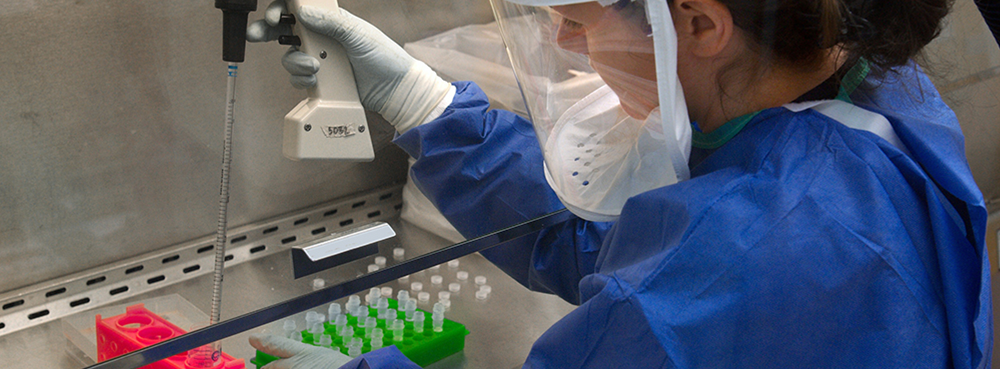
A laboratory incident at UC Berkeley in 2009 caused severe chemical burns to a student. A few drops of the corrosive chemical oleylamine fell onto a researcher’s uncovered forearm. When he realized what happened, he went to the restroom and washed his arm with soap and water for about a minute. Unfortunately, oleylamine is corrosive and hard to wash off the skin. The Safety Data Sheet (SDS) recommends immediate flushing with plenty of water for a minimum of 15 minutes. Over the next 24 hours, delayed burns appeared on the student’s arm, eventually requiring hospital treatment.
Another lab incident at the same university proved even the smallest quantities of chemicals may cause significant harm when something goes wrong. A graduate researcher was synthesizing 1 gram of diazonium perchlorate crystals, a chemical compound known for its explosive and unstable properties. He was using a metal spatula to transfer the perchlorate salts into a porcelain funnel when the chemical exploded. It sent tiny shards of porcelain everywhere, shattering the researcher’s eyeglasses and scratching his cornea. A fellow researcher assisted the injured person with using the eye wash before heading to hospital for treatment.
Emergency safety showers and eye wash equipment provide the first line of defense from chemical splashes and burns, or when damaging dust or small particles get in the eye. When working with hazardous or toxic lab chemicals, any delays in treatment can have serious consequences.
Requirements for Safety Showers and Eyewashes
Industries adopted ANSI/ISEA Z358.1-2014 as a standard for the design, performance, use and maintenance of emergency showers and eye wash equipment. It lists specific requirements for water temperature, flow rate and other functionality for emergency safety showers and other safety equipment. The overall purpose is to ensure an effective flushing of chemicals off the skin of an injured person.
- An emergency safety shower must provide a minimum water flow of 20 gallons (76 liters) per minute, for at least 15 minutes. The minimum water flow rate for eye washes is 0.4 gallons (1.5 liters) per minute for 15 minutes. If the unit is a combination eye and face wash, it must deliver 3 gallons (11.3 liters) per minute. This makes sure there is an adequate amount of water to dilute and flush away the chemical, but the water velocity is not so high it damages the skin or eyes.
- Protect eye wash nozzles from dust or other contaminants using covers. Under no circumstances should dirty water enter a user’s eyes during operation.
- Emergency safety shower water temperature should be in the tepid range of 60 to 100 F (16 to 38 C). If the water is too cold, a person may exit the shower early and may even suffer shock or hypothermia. If it is too hot, the heat may scald the person or open the pores of the skin causing more severe chemical burns. It could also prevent them from holding their eyes open for the entire time required to flush.
- Once activated, an emergency safety shower needs to keep flowing without operator intervention. This provides time to remove contaminated clothing. It also allows the injured person to focus on flushing the affected area, without having to worry about keeping the water flowing.
- Eye wash stations should have enough space for a person to hold their eyelids open with their hands while rinsing their eyes.
Best Practices for Emergency Safety Shower and Eye Wash Equipment in Labs
Because most laboratory environments contain an abundance of different types of chemicals, safe handling practices should always stay at the top of everyone’s minds. It’s important to make sure the SDS for each chemical is easily accessible and that all lab personnel understand the associated risks and hazards. Review standard operating procedures before carrying out lab tasks.
When certain chemicals come into contact with the body or clothing, emergency safety showers may be the difference between life and death. Here are some useful tips for labs regarding emergency safety showers and eye washes:
- Always wear ANSI-approved safety glasses during laboratory activities. Most standard prescription eye glasses are not designed to resist chemical splashes or shrapnel. Check with your eyewear provider to ensure corrective lenses issued comply with the current ANSI Z87.1 requirement.
- Make sure someone is nearby when performing tasks involving hazardous or flammable materials. In case of vision impairment or chemical burns in an emergency, you may require assistance.
- There are several styles of emergency showers suitable for laboratories. Use plumbed emergency safety shower stations when possible. Powder coated pipework stands up well to corrosive and flammable chemicals. Various models are available when space is limited.
- Place the laboratory shower in a location where someone would be comfortable enough to remove contaminated clothing. For additional privacy, modesty curtains are available. These also prevent water and contaminants from splashing the area around the shower. Helpful hint: instruct all lab personnel to keep a change of loose-fitting clothes in the lab near the safety shower in case their lab coat and clothes become contaminated and need to be removed.
- ANSI requires weekly testing of plumbed emergency shower and eyewash equipment. Make sure the path to the shower is clear of obstacles. Check that there is adequate signage. Activate the station per its instructions and flush to remove any sediment. Ensure that all electronic equipment in the general vicinity of the shower/eye wash fixture is protected. Confirm that drainage is available to catch the water when activated. Always check the temperature and flow rate. Keep record of any problems, malfunctions or broken parts and request maintenance if needed.
Note: For labs that have special drainage requirements to prevent contamination of the water table, always adhere to the emergency safety shower and eye wash equipment SOPs for activation.
- Create and foster a culture of safety sharing and learning. Encourage lab workers to regularly discuss and dissect incident reports and case studies from industry journals or other laboratories. When internal incidents occur, be transparent and open during the safety investigation. Specify a few minutes in every meeting and gathering to share findings among all lab workers. If necessary, provide additional training to prevent similar incidents in the future.
Remember, emergency safety showers are only one component of laboratory safety. Always follow simple lab best practices like using the appropriate PPE when working with chemicals or working with explosive chemicals from inside a fume hood or behind a blast shield. These steps will go a long way towards maintaining a safe lab environment.
Emergency Safety Equipment for Laboratories
Hughes supplies an indoor safety shower and eye wash range designed for laboratories that meet the requirements of ANSI as well as the European Standard EN 15154 Part 1 for plumbed in body showers. Stand-alone eye and face washes options include wall or pedestal mounts and several basin styles, depending on application. Laboratory showers feature easy-to-clean powder coated stainless steel pipework. Ring main mounted, ceiling mounted, wall mounted and floor mounted options are all available.
Contact Hughes Safety Showers for Emergency Safety Shower Equipment
Hughes Safety Showers specializes in keeping people safe from workplace hazards like chemical splashes or burns. Our laboratory showers and emergency safety equipment meet the highest quality standards and complies with ANSI and OSHA requirements for safety showers. Learn more about our laboratory safety showers or contact our technical experts for a free site survey or advice on your application.
References
- Berkeley EH&S. Lessons Learned – Oleylamine Chemical Burn
- OHS Online. Putting the Lid on Chemical Burns
- Berkeley EH&S. Lesson Learned – Chemical Explosion Causes Eye Injury
- OHS Online. Understanding the ANSI Z358.1-2014 Standard for Plumbed and Portable Eyewash Stations
- Lab Manager. A Look at Preventing Eye Injuries




